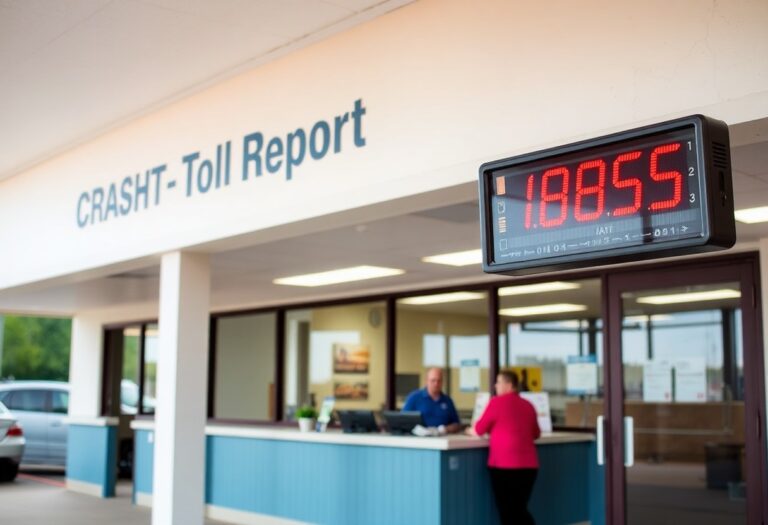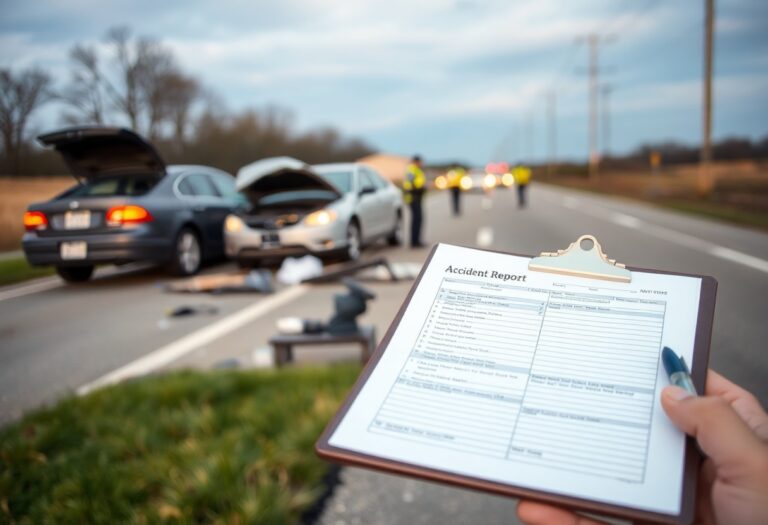Over the course of your driving experience, there may come a time when you find yourself involved in a car accident in Falls County, Texas. Knowing how to efficiently file a car accident report is crucial for your insurance claims and legal protection. This guide will provide you with step-by-step instructions to navigate this process effectively, ensuring you take the right actions to protect your interests and promote safety on the roads.
Essential Steps After a Car Accident in Falls County
After experiencing a car accident in Falls County, your immediate actions are critical in ensuring your safety and protecting your legal interests. Taking proactive and well-structured steps can also help streamline the process of filing insurance claims later. A clear understanding of what to do next can help you regain control of the situation and may ultimately impact your recovery and future actions.
Immediate Actions to Take at the Scene
First, ensure your safety and the safety of others by moving away from oncoming traffic. Check for injuries, and if someone is hurt, call for emergency help immediately. If the vehicles are drivable, move them to a safe location to prevent additional collisions. Assess your surroundings and stay calm while you gather necessary information.
Gathering Necessary Information
Collecting thorough information at the accident scene is crucial for any future claims and potential legal proceedings. You should document the other driver’s name, insurance details, contact information, and vehicle license plate numbers. Take note of the time and location of the accident, road conditions, and weather factors that could have influenced the incident. Also, gather contact information from any witnesses present, as their accounts may provide valuable insight later. Finally, be sure to take photographs of the vehicles, accident scene, and any visible damages.
Understanding Texas Law Regarding Accident Reports
Texas law mandates specific procedures following a car accident, particularly concerning the filing of accident reports. Knowing these requirements ensures compliance and protects your rights after an incident. The law varies depending on the severity of the accident, and understanding how it unfolds can aid in navigating the aftermath more efficiently.
Legal Requirements for Reporting Accidents
In Texas, you must file a report with the Texas Department of Transportation (TxDOT) if an accident results in injury, death, or property damage exceeding $1,000. This report needs to be submitted within 10 days of the accident. Not only does this protect you legally, but it also serves as a critical piece of documentation for any potential insurance claims.
Who is Responsible for Filing the Report
Typically, the driver of the vehicle is responsible for filing the accident report. However, in certain situations, such as the driver being incapacitated, a passenger or a concerned witness may file on the driver’s behalf. It’s vital to ensure that your report is filed accurately and promptly to avoid any potential penalties.
If you cannot file the report yourself due to injury or other compelling reasons, a willing passenger or even a bystander can step in to fulfill this obligation. This flexibility helps guarantee that important details regarding the accident are captured quickly. Keep in mind that detailed information, such as witness contact information and a description of events, are imperative for a comprehensive report and may facilitate smoother claims processing with insurance companies later on.
Navigating the Documentation Process
Properly navigating the documentation process following a car accident ensures that you have the necessary records to support your case and comply with Texas law. This involves collecting important information, documenting evidence at the scene, and submitting the right forms. You’ll want to keep your records organized and detailed to avoid complications down the line, particularly when dealing with insurance claims or legal matters.
How to Complete the Texas Motor Vehicle Accident Report
To complete the Texas Motor Vehicle Accident Report (Form CR-2), gather crucial details such as your driver’s license number, vehicle registration, and insurance information. Also include names and contact details of all parties involved, witness statements, and a comprehensive account of the accident itself. Ensure that your report is accurate and reflects all pertinent information to support your case.
Submitting the Report: Where and How
You can submit the Texas Motor Vehicle Accident Report to your local law enforcement agency or mail it to the Texas Department of Transportation. It’s vital to submit the report within 10 days of the accident to comply with Texas law. Ensure that you keep a copy for your records.
To submit your report, visit your local police department where the accident was filed; many agencies have dedicated sections for handling such documents. If you’re choosing to mail it, address it to the Texas Department of Transportation at their designated headquarters. Some municipalities may also offer online submission options, allowing you to expedite the process from the comfort of your home. Regardless of the method you select, retaining a personal copy of the report is key for future reference, especially when dealing with insurance claims or legal matters.
Common Obstacles in Accident Reporting
Reporting a car accident can be fraught with challenges, making the process more stressful than it needs to be. Misunderstandings about liability, insurance details, and the way disputes are handled often create obstacles that can delay the resolution of claims. Additionally, errors in reporting can complicate matters further, leading to frustration when seeking compensation. Understanding these common pitfalls can help you navigate accident reporting more smoothly.
Misunderstandings About Liability and Insurance
Many individuals misinterpret liability and insurance coverage, leading to confusion in the aftermath of an accident. These misunderstandings may stem from assumptions about who is at fault or what specific insurance policies cover. For instance, you might believe that your insurance will automatically cover all damages, while in reality, certain situations require the other party’s insurance to take precedence. Being informed about the specifics of your coverage can save you from costly surprises later.
Dealing with Disputes and Errors
Issues often arise during the accident reporting process due to disputes between parties involved in the accident or errors in the police report. These discrepancies can have significant implications for how responsibility is determined and dictate the outcome of insurance claims. Taking proactive steps to clarify and document your version of the events is imperative.
Dealing with disputes and errors effectively involves gathering all necessary evidence, such as witness statements, photographs, and detailed accounts of the incident. If you believe the police report is inaccurate, you can file an amendment and provide supporting documentation. Moreover, communicating clearly with the insurance companies involved will help to address conflicting perspectives and ensure that everyone is on the same page. By staying organized and persistent, you can resolve disputes more efficiently and facilitate a smoother claims process.
The Aftermath: Using Your Report to Your Advantage
After you’ve filed your car accident report, it becomes an vital tool to maximize your outcomes from the incident. The information detailed in the report not only helps clarify the events leading to the crash but also establishes accountability. Accurate reporting can facilitate communication between you and your insurance provider or any legal entities involved, effectively turning your documentation into a strong asset for navigating the subsequent processes.
Leveraging the Report for Insurance Claims
Your car accident report serves as a reliable resource for your insurance claims process. It includes key details such as vehicle damages, witness statements, and police findings, which can substantiate your claims. This evidence reduces disputes over liability, making it easier for your insurance adjuster to assess damages and process your claim efficiently. Providing the report can significantly expedite the compensation you may be entitled to.
Preparing for Potential Legal Proceedings
In cases where the accident may escalate into legal issues, your report becomes a foundational element of your case. The facts outlined in the document can bolster your position, demonstrating who was at fault and the specifics of the accident. If you choose to pursue legal action, this documentation not only enhances your credibility but also allows your attorney to construct a more compelling argument on your behalf. The clearer and detailed your report, the stronger your stance in any potential litigation.
Gathering evidence for potential legal proceedings goes beyond just having a report. It’s vital to compile supporting documentation such as photos of the accident scene, medical bills, and witness contact information. The combination of your accident report with this supplementary evidence can effectively illustrate the impact of the incident on your life. If negligence is in question, showing how the accident has affected your daily activities or financial well-being adds depth to your legal case. Prepare thoroughly, as this can influence the outcome significantly.
To wrap up
The process of obtaining car accident reports in Falls County, Texas, is straightforward when you follow the step-by-step instructions provided. By knowing where to start, whether it’s through law enforcement or online platforms, you can efficiently secure your report. Ensuring you have the necessary information and documentation will ease the experience. Taking these steps will assist you in handling the aftermath of an accident responsibly and keep you informed of your rights and options in this situation.













